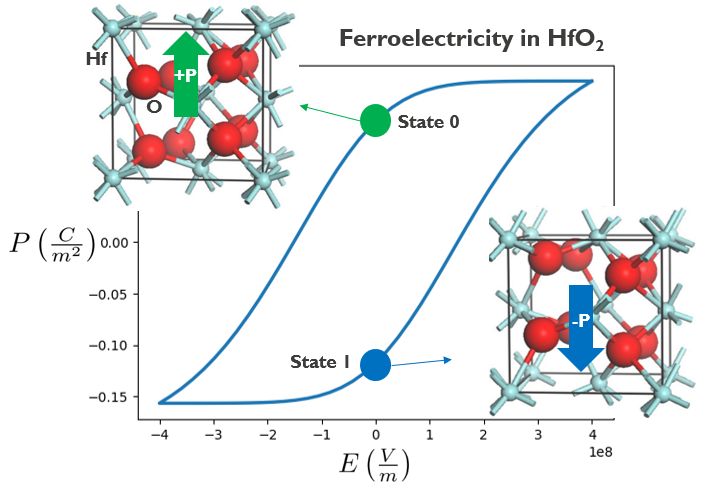Nanoscale ferroelectrics and their response to external stimuli
Leuven | More than two weeks ago
Ferroelectricity: where physics meets future technology
Ferroelectricity is a relatively new subject, only discovered in 1920 when studying Rochelle salts (Joseph Valasek). It studies materials with a permanent polarization that often have a characteristic hysteretic response to an external electric field. The use of a ferroelectric layer as the gate oxide in a field effect transistor goes back to the 1950s. Currently, the main interest is in nanoscale ferroelectric materials for future memory technologies where the hysteretic response is used to create two (or more) distinct memory states.
When applying a large enough electric field the spontaneous polarization can change direction (or sign, P to -P), in doing so one can switch between the two memory states. A large field over the gate oxide will also change the oxide properties, it can for instance result in charge injection (trapping). The charge in the oxide will alter the device electrostatics and therefore the control over the polarization and memory states.
A better understanding of ferro materials and their interactions within future devices is critical for their technological advancement. This involves studying the ferroelectric response to non-idealities and external stimuli such as surface effects (nanoscale), temperature changes, phase transformations, charge trapping or ion exchange. As polarization changes can happen in the nanosecond range, one of the challenges is to study trapping on shorter (microsecond) timescales as well.
What will you do?
- Study ferroelectrics for future memory technology: e.g. ferro field effect transistors (FeFET), ferro capacitors (e.g. in FeRAM), ferro tunnel junctions (FTJ), combinations with oxide semiconductors or in superlattice structures.
- Modelling of the ferroelectric response to external stimuli with a focus on the interaction with charge injection.
- Construct new characterization techniques for performance/reliability related to ferro devices and their interaction with trapping on short timescales.
- Link modelling and experimental data.
Who are you?
- Physics or chemistry/engineering with a strong emphasis on physics
- Knowledge of semiconductor physics
- Knowledge of programming and simulations
References: B. Truijen et al. IRPS 2022, B.J. O’Sullivan et al. IRPS 2022.
40% modelling, 40% experimental, 20% literature

Required background: Physics or chemistry or engineering with a strong emphasis on physics
Type of work: 40% modelling, 40% experimental, 20% literature
Supervisor: Jan Van Houdt
Daily advisor: Brecht Truijen
The reference code for this position is 2024-015. Mention this reference code on your application form.
